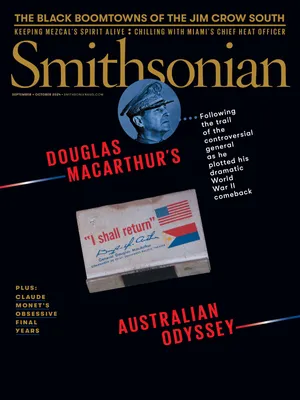The Celtic Origins of Trick-or-Treating
The spine-tingling roots of a mischievous Halloween tradition
:focal(1050x750:1051x751)/https://tf-cmsv2-smithsonianmag-media.s3.amazonaws.com/filer_public/98/80/9880b89f-6f08-4b08-91eb-9176d0e56ce1/untitled-1.jpg)
October 1966. Eddie Adams / AP Images
Between themed TV specials, novelty candy flavors and the pageantry of the mass-produced costume, Halloween has become so thoroughly Americanized that we often forget the holiday grew from much more far-flung, and much more ancient, roots.
Costumed trick-or-treating takes its inspiration from the Celtic holiday Samhain—“summer’s end” in Irish—more than 2,000 years ago. Samhain marked New Year’s Day and fell around November 1 in the modern calendar. On the eve of each new year, the Celts believed, the barrier between the living and the dead became porous, allowing a host of supernatural entities—including fairies and demons—to emerge and stalk the earth for one spine-chilling night. To pacify these spirits and ward off trouble, people would leave out offerings of food. As an extra precaution, they’d disguise themselves as beasts or monsters to blend in with the otherworldly visitors.
In the seventh or eighth century, Samhain took on a second name: All Saints’ Day, or, in Middle English, All-Hallows; the night before, when those demons walked the Earth, became known as All Hallows’ Eve, or Halloween. (The change likely came when Pope Gregory III moved the church’s celebration of saints from May 13 to November 1, to assimilate pagan influences as Christianity was working to win crucial converts.)
By the 16th century, “guising” was common in Scotland and Ireland on All Hallows’ Eve: Children, disguised as ghouls, made the rounds, receiving treats to ward off malign spirits. In England, even poor adults would sometimes beg for biscuits; in return, they would send up a prayer for that person’s lost loved ones.
Halloween didn’t properly reach the United States until the 1840s, with the mass arrival of immigrants from Ireland and Scotland. These newcomers brought their many traditions with them—including begging for treats. But trick-or-treating—a term that only started appearing in the 1920s—really took off stateside after World War II, when sugar rationing ended. Burgeoning new suburbs provided accessible Halloween routes for families, and the rise of individually wrapped pieces of candy made it easy for adults to distribute treats to children—and to help stave off the pranking that had become popular among ghoulish American youngsters starting in the 1920s. As one man put it in a letter to the editor in the 1940s, trick-or-treating “is, obviously, a mild kind of blackmail in which—whatever the motives—the treats are always forthcoming.”
